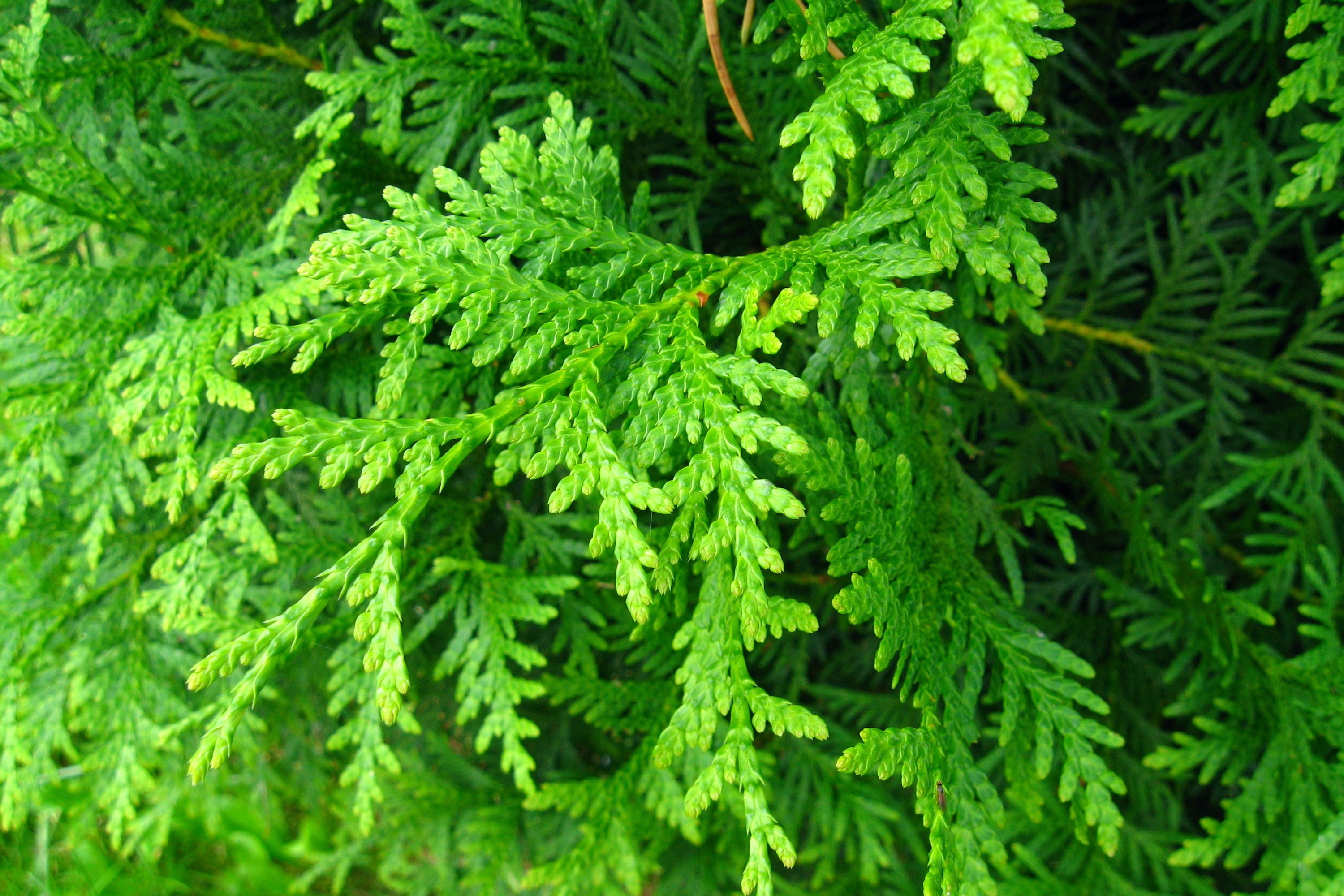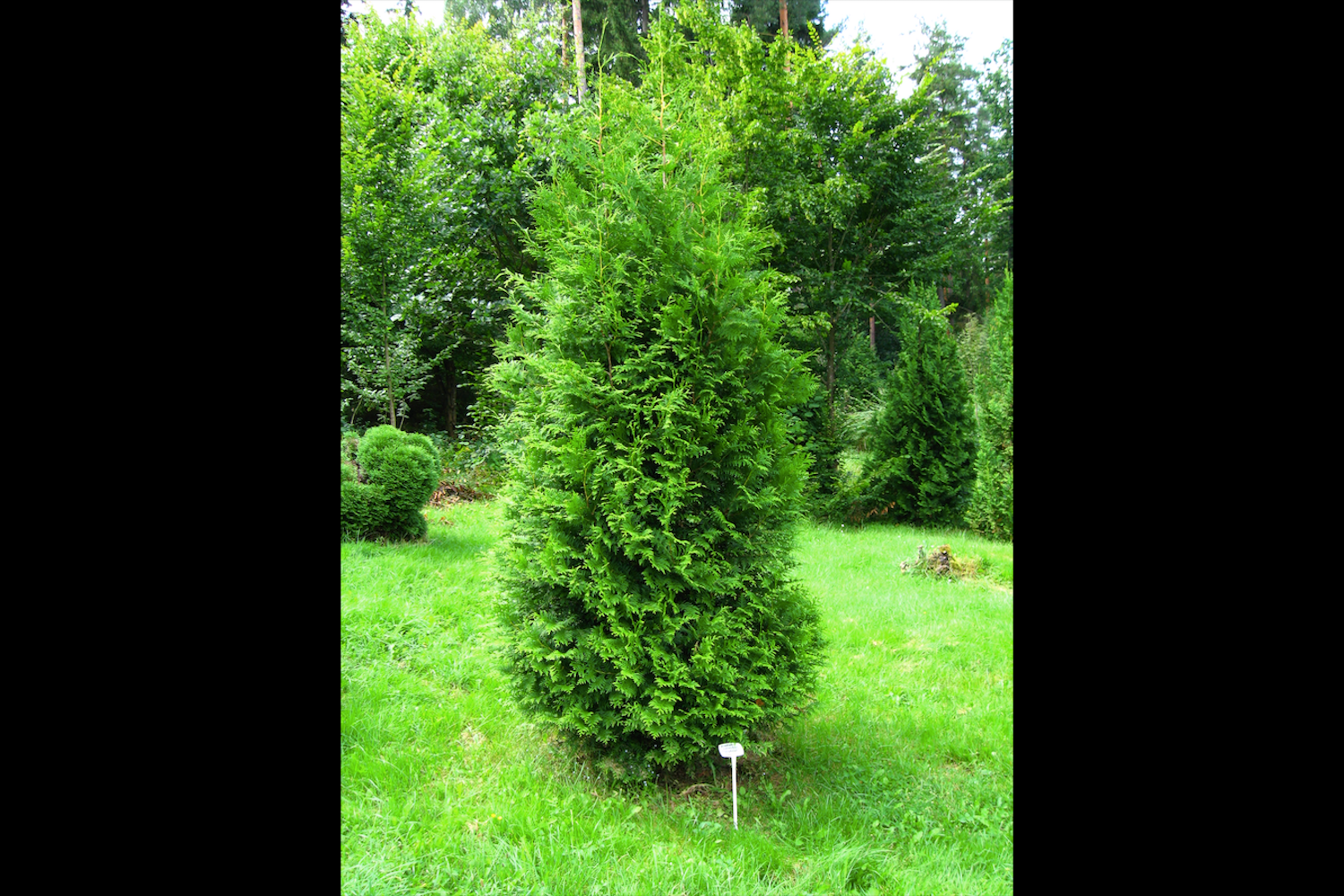Thuja occidentalis 'Brabant'
Approx. 0.5 litre pot
About this cultivar:
Thuja occidentalis 'Brabant' is an evergreen conifer with reddish-brown bark and a untidy conical shape that can be shaped is needs be. It is a best selling cultivar that you will see everywhere, well known because it grows fast and everywhere! Not normally our kind of plant but we sell it is we have one randomly in our woodland garden. Most people use it as hedging.
There is an another widely available cultivar called 'Smaragd' which is similar but grows slower and has a tidier habit more suitable to formal gardens. The untidy habit of 'Brabant' gives it a more natural look, and you can always trim it to make it look more formal. 'Brabant' also makes a denser hedge if you really want to go down that route.
It has yellowish-green foliage that turns slightly bronze in autumn but in gerneral maintains the same colour all year round, light brown scaly cones and insignificant flowers in spring. Fast growing and shade tolerant, also bog tolerant.
The species, Thuja occidentalis, commonly called the white cedar, is thought to be the first American tree to be grown in Europe.
- Position: Full sun, partial shade, full shade
- Soil: Almost any soil, grows well in Ballyrobert
- Flowers: -
-
Other features: Grows well in Ballyrobert, Dappled Shade or Full Shade Loving
- Hardiness: H7 - Hardy in the severest European continental climates (< -20°C), Fully hardy - grows well in Ballyrobert!
- Habit: Columnar or Upright
- Foliage: Evergreen
- Height: 100 - 800 cm (3.5 - 26 ft) Cut back to keep smaller
- Spread: 50 - 400 cm (1.5 - 13 ft) Cut back to keep smaller
- Time to full growth: 5 to 10 years
- Plant type: Tree
- Colour: Green
-
Goes well with: -
About this genus:
Thuja (thew-ya) is a genus of coniferous trees in the cypress family (Cupressaceae). There are five species in the genus, two native to North America and three native to eastern Asia.
Thuja are evergreen trees growing with stringy-textured reddish-brown bark. The shoots are flat, with side shoots only in a single plane. The leaves are scale-like except young seedlings in their first year, which have needle-like leaves. The scale leaves are arranged in alternating x-patterned pairs in four rows along the twigs.
The genus Thuja, like many other forms of conifers, is represented by ancestral forms in fossils found in northern Europe, and with the advance of time is thought have migrated from northerly to more southerly regions. I believe this is unusual as most genus spread and speciate away from the tropics. Thuja was last ‘seen’ natively in Europe during the Pliocene (5.3 – 2.8 million years ago). Bear in mind the conclusions from this kind of fossil research can, and do, often change with new discoveries, it is not necessarily…..set in stone.
The wood is light, soft and aromatic. It can be easily split and resists decay, so is often used for bee hives etc (light weight outdoor things basically). For example, Thuja plicata is an important tree to the First Nations people of the Pacific Northwest and is sometimes called the ‘Canoe Tree’ because of its use as a material for Native American canoes.
Thuja is antibacterial and has been used historically for medicinal purposes. Some have even been used by Native Americans in teas to treat scurvy. But don’t try at home, ss with many Cupressaceae, thuja can induce allergic reactions, including skin, eye and breathing problems.
They will grow pretty much anywhere, perhaps even desert or swamps. They are widely grown as ornamental trees, and extensively used for extremely ugly privacy hedges. A more common, pleasing, ornamental use is in formal gardens or Italianate gardens, perhaps even shaped as topiary. However we plant ours on their own where they can add a bit of interest, mystery, or structure to a perennial border. Also try planting sporadically through a deciduous woodland or hedge.




